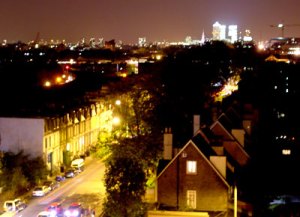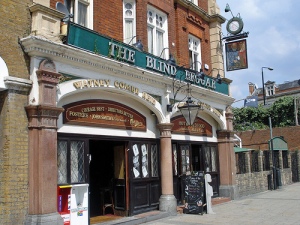Only five years ago I was still experiencing a certain “diffused apprehension” very similar to what I had once seen described on the first page of Rand’s Atlas Shrugged whenever I would find myself downtown at dusk.
In fact, I often marvelled how precisely Rand had captured this emotion in the opening of her controversial novel:
Eddie Willers walked on, wondering why he always felt it at this time of day, this sense of dread without reason. No, he thought, not dread, there’s nothing to fear: just an immense, diffused apprehension, with no source or object. He had become accustomed to the feeling, but he could find no explanation for it . . . . Had he always felt it? He was thirty-two years old. He tried to think back. No, he hadn’t; but he could not remember when it had started. The feeling came suddenly, at random intervals, and now it was coming more often than ever. It’s the twilight, he thought; I hate the twilight.
As with Eddie in the story, the feeling usually came on for me as I was either returning to the office in the evening or still at the office at dusk and in the hours thereafter. For Eddie, the towering skyscrapers lining the downtown streets proved a source of comfort in such instances: “No, thought Eddie Willers, there was nothing disturbing in the sight of the city. It looked as it had always looked”; in fact, we learn that he was reassured by the mundane activities of and objects on display on the bustling city streets, although he did not know why.
Different from Eddie, however, the feeling for me seemed to be precipitated by the streets downtown, canyoned by office-building towers. Something about the buildings was eery and filled me with a vague, heavy sense of unease that was difficult to shake and that interfered with my work. At such times, my mind would actually turn to Rand’s story because I had no idea what I was experiencing — and still do not know what it was.
I recently realized that I am no longer experiencing this sensation, at dusk or otherwise. As with the inception of the feeling, thinking about it, I can’t pinpoint the moment, or even general timeframe, of its cessation. I do, however, remember when I realized that I no longer felt it: on one of literally hundreds of nights coming home after 11:00 p.m., my mind preoccupied by other concerns in completely different magnitudes and realms than Rand’s “diffused apprehension”, I glanced out of the window from the backseat of the black sedan racing me home down the A12 and saw, as if for the first time (although in reality I had seen it probably hundreds of times), the blazing nighttime skyline of the Canary Wharf district rising out of the darkness of London’s Docklands.

Canary Wharf buildings rising above East London neighborhoods. Image source: http://www.urban75.org/photos/london/lon099.html
On subsequent trips, as often as the driver is willing to take Whitechapel road east out of London (they often argue and prefer their own imagined “shortcuts”), I request that route:
I enjoy seeing the historic scenery and compact cityscape of the Whitechapel area gradually give way to the newer thoroughfare out of London, passing the massive ongoing construction projects for the 2012 Olympics in the Stratford area and then north to the relatively more quiet neighborhood we call home.
Whitechapel Road, even at the late hours that I find myself being driven down it, retains the hectic flurry of the bustling city. The presence of other people about their business at that hour is reassuring. Leaving my office, within minutes we are on Whitechapel Road and the East London Mosque passes on the right. I have only seen it in daylight, as in this picture, one or two times despite having passed it hundreds of times. It seems that the mosque or the area in the immediate vicinity is always busy, except perhaps if I happen to be passing by in the very early hours of the morning.
Looking right once you reach Mile End station after passing first the mosque to the right and the Blind Beggar to the left, Canary Wharf looms in the sidestreets. Photo courtesy of http://www.flickr.com/photos/dgeezer/
Contrary to the “diffused apprehension” of the past that I used to experience in the presence of office building towers, I now look to them in those late hours as a beacon, radiating something hopeful and positive about the City. Granted, the replacement of reassurance for apprehension might be in some way connected with the city whose skyline walls in the streets. I have often wondered whether visits to cities of my past would dredge up the unease, stirring waters that have become stagnant with time.
For now, however, I am thankful for the passage of time that seems to have brought with it a sense of peace (or at least calm revolt) with city streets. In fact, the City now seems to represent mankind’s attempt to make a valiant stand against entropy, a reassuring prospect even if ultimately futile. Strong political, financial, judicial, religious etc. institutions, and the intellectual bulwark that supports them against the torrents of corruption, decline and ultimate decay, contribute to mankind’s noble effort to resist the social and physical entropy that has too often dragged down civilizations. Perhaps this thought has been subliminally rehabilitating my comfort level in walking down city streets. May we remember to express our gratitude for such institutions on this Thanksgiving Day as we reflect on the cultural and intellectual heritage upon which our own society continued to build and may we contribute to further strengthening them in the face of adversity.

Continue reading at the original source →




